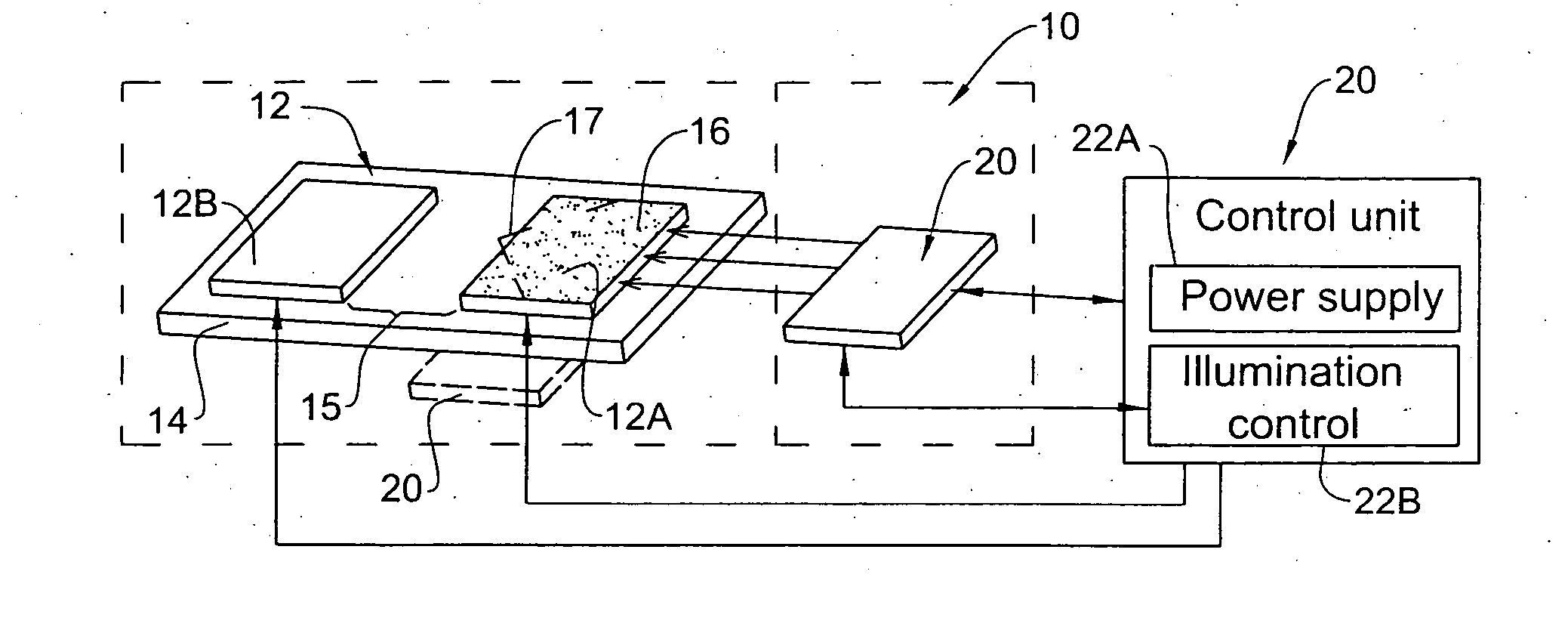Electron emission device
a technology of electron emission and electronic devices, which is applied in the direction of instruments, tubes with screens, tubes with electrostatic controls, etc., can solve the problems of low current capability, poor input circuit characteristics of such devices, and place a limit on both the miniaturization and switching speed of such devices, so as to facilitate the manufacture and operation of electronic devices. , to achieve the effect of improving the performance of electronic devices
- Summary
- Abstract
- Description
- Claims
- Application Information
AI Technical Summary
Benefits of technology
Problems solved by technology
Method used
Image
Examples
Embodiment Construction
[0050] Referring to FIG. 1, there is schematically illustrated an electronic device 10 constructed according to one embodiment of the invention. The device is configured and operable as an electron photoemission switching device. In the present example, the device has a diode structure configuration. The device 10 comprises an electrodes' arrangement 12 formed by a first Cathode electrode 12A and a second Anode electrode 12B that are arranged on top of a substrate 14 in a spaced-apart relationship with a gap 15 between them. The device is configured to expose the Cathode 12A to exciting radiation to cause electrons emission therefrom towards the Anode. As shown in the present example, the device includes an illuminator assembly 20 oriented and operable to illuminate at least the Cathode electrode 12A to thereby cause emission of electrons from the Cathode towards the Anode.
[0051] The switching (i.e., affecting of an electric current between the Cathode and Anode) is controlled by t...
PUM
| Property | Measurement | Unit |
|---|---|---|
| length | aaaaa | aaaaa |
| electric field | aaaaa | aaaaa |
| work function | aaaaa | aaaaa |
Abstract
Description
Claims
Application Information
 Login to View More
Login to View More - R&D
- Intellectual Property
- Life Sciences
- Materials
- Tech Scout
- Unparalleled Data Quality
- Higher Quality Content
- 60% Fewer Hallucinations
Browse by: Latest US Patents, China's latest patents, Technical Efficacy Thesaurus, Application Domain, Technology Topic, Popular Technical Reports.
© 2025 PatSnap. All rights reserved.Legal|Privacy policy|Modern Slavery Act Transparency Statement|Sitemap|About US| Contact US: help@patsnap.com



